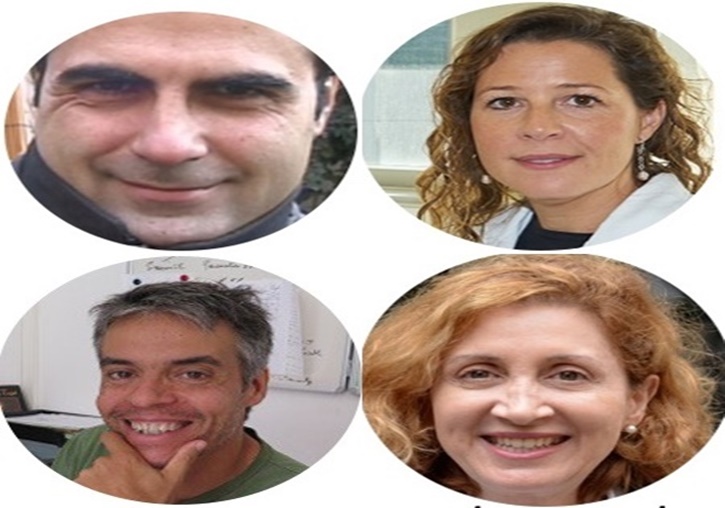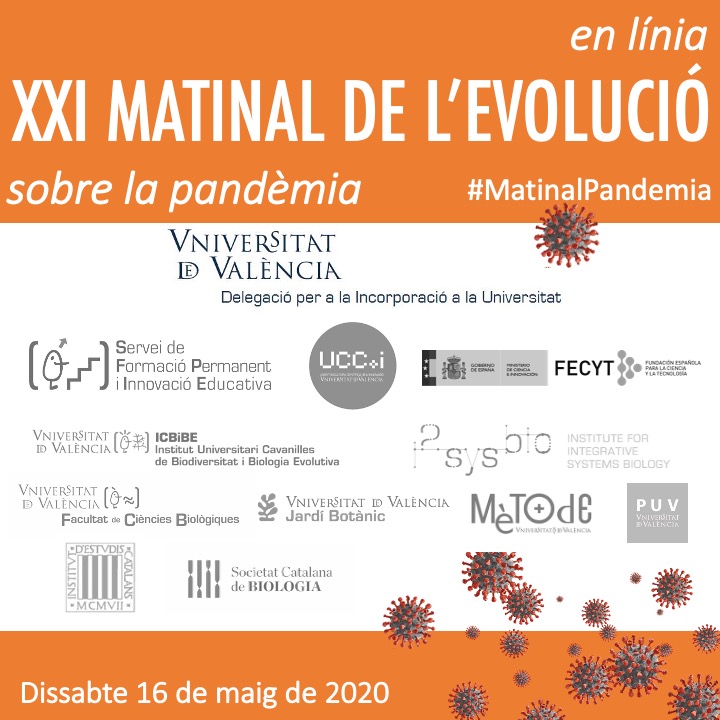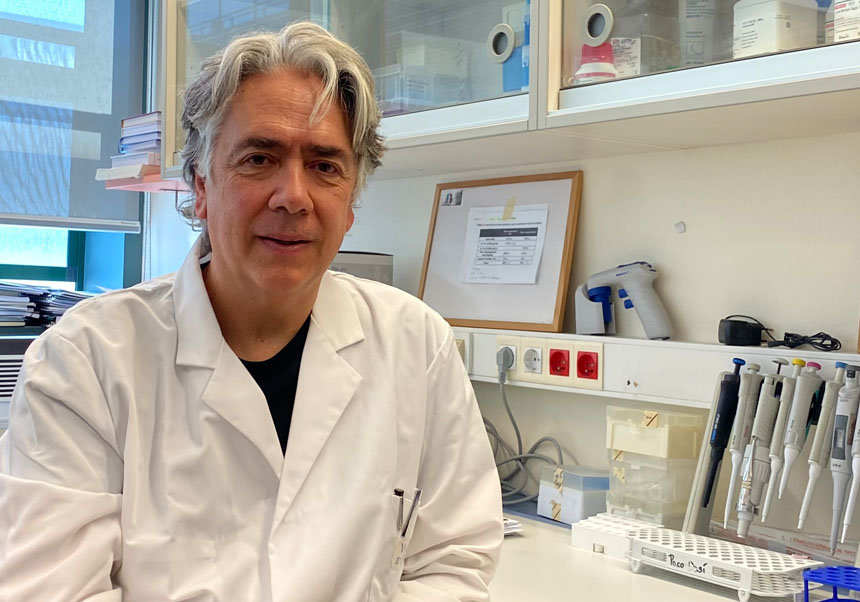The University of Valencia analyses the evolution of the COVID-19 pandemic in a virtual informative session
- Scientific Culture and Innovation Unit
- May 18th, 2020

The XXI Morning session on Evolution was dedicated to the COVID-19 pandemic and had more than 450 registrations. David Alonso, Mireia Coscollá, Xavier López-Labrador and Carolina Moreno took part as expert staff. The rector of the University of Valencia (UV), Mavi Mestre, inaugurated the day with words of gratitude to the people and organisations that make it possible to hold scientific dissemination activities.
“This is an opportunity to better understand the situation we are living in and face the future that awaits us. The University must support society with training, innovation, research, knowledge transfer and the dissemination of science”, said the Rector, who recalled the importance of offering quality services to society. “The University must be well funded, because this is what gives it the ability to respond quickly to provide solutions and resources to complicated situations like this”, added Mestre.
Xavier López-Labrador, senior researcher of the National Health System at the FISABIO foundation, began the Morning session with the talk “New coronavirus: that who warns you does not want to hurt you”, where he reviewed the main viral epidemics of the twentieth century. The expert reviewed the zoonotic origins of diseases and also summarised the main diagnostic strategies used with the new coronavirus.
Mireia Coscollá, researcher in the Ramón y Cajal programme and leader of the PatoGenOmica Bacteriana group at the Institute of Integrative Systems Biology I2SysBio, a joint centre of the UV and the CSIC, gave the talk “The genomes of SARS-CoV-2”. The expert explained the importance of knowing about SARS-CoV-2 and its genomes. This fact can help to know the origin, history and how the epidemic is advancing or retreating or at what rate it changes and whether the accumulated novelties imply significant changes in the clinical or epidemic behaviour of the disease.
David Alonso, a CSIC scientific researcher at the Blanes Centre for Advanced Studies, gave a talk on “The mathematics and dynamics of infectious diseases”. Alonso described what is meant by dynamics and what are the limitations and advantages of encapsulating the dynamics of the spread of an infectious disease in a mathematical model. The specialist explained in detail the meaning of the parameters that allow us to have tools with predictive capacity and the power to assess the measures that can be taken to contain the extent of the infection.
Carolina Moreno, professor of Journalism and researcher at the UV Polibienestar Institute, as well as coordinator of the ScienceFlows research group, made a detailed classification of the different types of lies and manipulations around COVID-19 and gave directions on how to identify them. The title of her speech was: “Hares run across the sea during the coronavirus pandemic: hoaxes, myths and rumours about COVID-19”.
The Morning session culminated in a discussion between the speakers, who answered the questions posed by the attendees through the chat, and which addressed, among other things, the reliability of the diagnoses, the origin of the virus and conspiracy theories.
This activity is part of the scientific dissemination plan of the Scientific Culture and Innovation Unit of the University of Valencia and has the support of the Spanish Foundation for Science and Technology, and with the collaboration of the Delegation of the Rector for University Integration (UV), Lifelong Learning Service and Educational Innovation (UV), Cavanilles Institute for Biodiversity and Evolutionary Biology (UV), I2SysBio Institute for Integrative Biology of Systems (UV-CSIC), Faculty of Biological Sciences (UV), Botanical Garden (UV), Publications of the UV, MètodeJournal (UV), Catalan Society of Biology, Institut d’Estudis Catalans.
File in: Investigació a la UV , Cultura Científica , Institut de Biologia Integrativa de Sistemes (I2SYSBIO) , Facultat de Ciències Biològiques , Difusió i comunicació científica , Internacionalització recerca , Emprenedoria



















